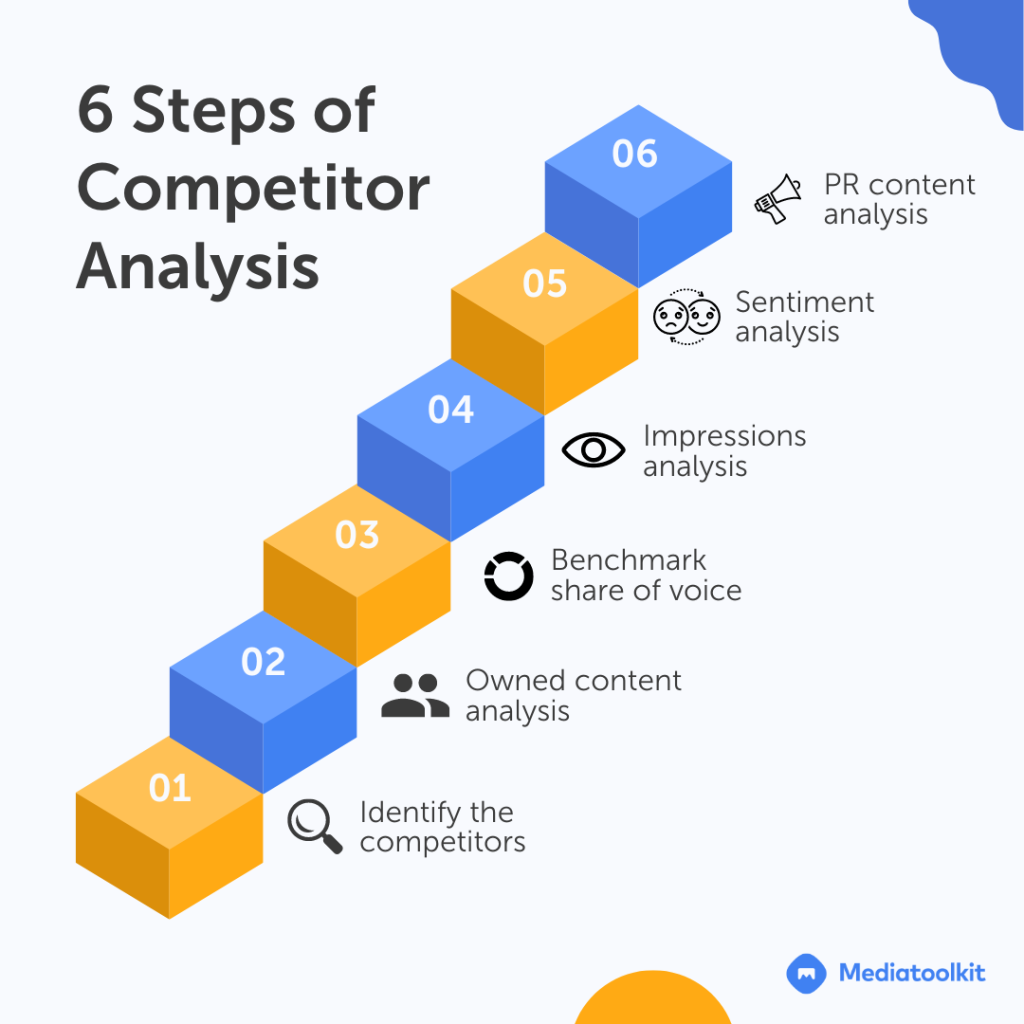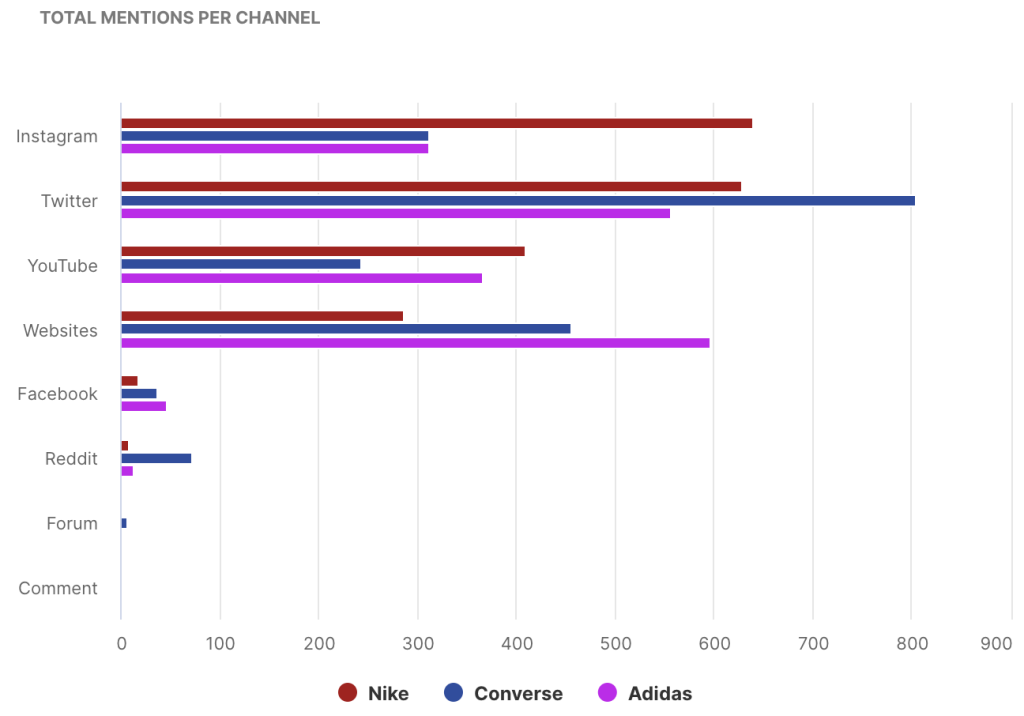If you’re a business owner you’re probably constantly looking for ways to improve consumer experience and increase engagement. The latter includes seeing where the gaps are and looking for the best competitor practices to develop an enhanced strategy.
This is where competitive benchmarking comes in. In other words, you’d probably want to find out more about long-term strategies and outcomes of your competitors.
? Read: Competitive Analysis: All You Need to Know
The reason for that is quite simple – to outperform your competitors and increase your business results.
In this blog we’ll go through the definition of competitive benchmarking, dig a little deeper into how it helps your business and go through some of the best practices in the end.
What is Competitive Benchmarking
Competitive benchmarking is researching your business competitors and their practices and evaluating your success against theirs. The latter is a method to adapt your company to industry processes and ensure you get a solid market share.
By looking into competitors’ performance markers, you will create your benchmark set to follow. You can use it as the best standard your brand needs to achieve. Benchmarking helps you see why people choose other products and services over your brand. Knowing the details, you will create a unique selling proposition to attract them back.
For example, an organization that builds websites can have poor consumer engagement. Its competitors, on the contrary, are doing great. To find the performance gaps, an organization needs to do a competitive benchmarking to answer a few key questions:
- Which brands are leaders in terms of consumer interaction as well as engagement?
- What methods do these brands use to enhance the consumer experience?
- Do these brands use a particular touch point with consumers?
- How do people rank these brands regarding consumer service, ease of communication, and the site’s visual appearance?
Read Competitor Analysis: Stay Ahead of Competition with Media Monitoring
How does Competitive Benchmarking Help Your Business
Benchmarking helps you in several ways. You get to keep your competitiveness and maintain awareness of the market’s best business practices.
There are several ways to get there – through analyzing your company, improving services/products and outperforming your competitors. Let’s check these in detail.
Organize the company’s overview
By conducting competitive benchmarking, you can analyze your brand’s performance. You get a chance to see your pluses and minuses and determine whether your competitors are more robust in these aspects. If they are, you will also get an overview of their practices that helped them succeed. As a result, you will not only understand what your brand is lacking and why. You will also get a list of your industry standards to acknowledge and strive to achieve.
Improve the effectiveness of products and services
Moving further, benchmarking helps you enhance the effectiveness of your products. Whenever you know what people value in your competitors and what they lack in you, you will be able to work on a new strategy. You will need to consider critical factors that drive competitors’ success and help them stay on top of the game. The latter also prevents you from spending money on delivering wrong practices and improper services.
If promoting a product doesn’t bring the desired outcome, see how other companies promote the same to understand where the deal breaker is. You’ll get efficient practices to apply instead of wild guessing and shooting for stars.
Outperform competitors – gain more consumers
Once you have a list of competitors’ strategies and their main tactics, you will have an opportunity to adapt and outperform them. Benchmarking leads you in the direction to follow, saving your time and effort. And with the correct data in hand, you will increase loyalty toward your brand.
If you can show potential consumers the apparent benefits they get while working with you, they will not hesitate to choose you. People prefer those who have better reviews, more perks, and better service. One way to get there is to get picky when hiring talent. Having recruitment CRM will lead to understanding the decision-making of candidates and clients; thus better consumer experience. Outperform your rivals and be sure it brings you more clients to work with.
Read What Is Competitor Mapping and How to Use It for Your PR Campaigns
Best Practices
Choose your competitive benchmarks
Before diving into benchmarking, you need to start with pinpointing critical indicators of your brand’s performance. The latter will help develop specific metrics to measure the brand against at the moment and in the future.
These are the areas that both drive company growth and, at the same time, may highlight where it is an outsider.
For instance, your brand is relatively stagnant from bringing in new consumers. You will then need to benchmark practices of brand awareness. In this case, the KPIs are:
- brand recognition
- consumer engagement
- client touchpoints
- promotional methods
- SEO techniques
- brand value
- client profiling
Determine what to measure
When determining metrics to measure, begin with the most critical business questions and the metrics you need to answer. Suppose you are an e-commerce platform analyst who noticed that the company is losing prospects for no apparent reason.
Benchmark each client’s touchpoint with the brand on their consumer journey against industry standards and former brand productivity. Instead of conversion rate, benchmark those steps with the most significant value, site traffic, and engagement rates. The latter helps to identify the best way for optimization.
You’ll benefit from limiting benchmarking to the industry’s standard metrics for easier comparison.
Identify competitors

Choosing your brand’s competitors might be a tricky thing to accomplish. Divide the market you’re working in into three segments. The first will include nearby competitors. The second will have leaders in the industry. The last will consist of upcoming firms based on the performance of multiple organizations in this particular area.
- The nearby competitors have the same level as you do. By evaluating such companies, you can exceed their practices and strategies. You will be taking inspiration from other companies and pointing toward aspects that your brand does better.
- Industry leaders are at the top of the market game. They have excellent skills, precedent experience, and every aspect of leading. By researching the top entities, you get a better idea of how those with a knack for everything play it. While their practices might not fit you now due to a lack of skills, resources, and time, there will be something to aim for.
- Upcoming brands are small companies still in the developing stage yet should never be underestimated. Keep an eye on them and how they’ve researched the market to get deeper into it. Check which business ideas beginners utilize and how they do it. It will also allow you to spot future competitors and be ready to react on time.
Read 4 Easy Ways to Monitor Competitors in Your Industry
Measure your benchmarks
The main thing in any research is collecting data. While your company is an open book, you cannot say the same about competitors. You can collect their public information through simple research or with the help of SEO techniques. You can also use data analytics consultancy for better data visualization and infrastructure.
Another way you can collect data is through media monitoring. Media monitoring tools like Determ provide information on all online mentions of a brand, their frequency, influence and sentiment. They provide insights into brand reputation and image and can enable you to recognize areas where you may invest more efforts.

You can track anything from press releases to financial reports, news articles, and sales statements or regular customer conversations. Any relevant information will add to the benchmarking process, as it is not about how big or small the fact is. It is what you can do with it that has a tremendous difference.
Your goal is to identify a trend. If a competitor has stuck to something and has been successful, this is exactly what you were looking for.
Have a timeline for improvement
Benchmarking can be pretty time-consuming. With all the competitors’ research, further analysis, and change implementation, it can take a good chunk of your time.
Try to limit the time for benchmarking and finish all the research and activities within your typical planning cycle. The latter is usually 90 days or, for some organizations, a quarter.
Measure the benchmarks at the beginning of the quarter, and apply changes in the middle. Share the outcome before the planning for the next quarter starts. This way, your work will be more effective as each step will have a fixed deadline.
Look outside your industry to gain ideas
While researching competitors will bring tons of insights, great ideas usually come from outside your market. With your competitive benchmarks, look into how companies from different industries deal with the same.
For instance, if your clients are not very keen on completing surveys or sharing their feedback, look at how hospitals and food networks do it. The first will show you how to be more sensitive toward consumer circumstances and how to catch people at the very moment.
While not all ideas from other industries might work for your brand, again, spot the trends and try to look at the bigger picture. So much-needed answers might be in simple approaches.
Wrapping Up
As brands strive to provide a superfine consumer experience, benchmarking will help you stay ahead of the game. Comparing what your brand is doing to what the industry leaders are doing will help you see a way for a good deal of improvement.
With the exemplary practices at hand, you will not only evaluate the relevant metrics and pick the right competitors. You’ll also measure your benchmarks in a way that brings your brand the desired outcome. You’ll have all the data and tools to exceed customer expectations and outrank competitors by spotting trends from the best on the market.
Dmytro Zaichenko is a Marketing Specialist at Coupler.io, a data integration tool. He has 7+ years of experience in content making. Apart from writing, he’s passionate about networking and the NBA.



